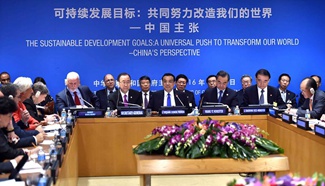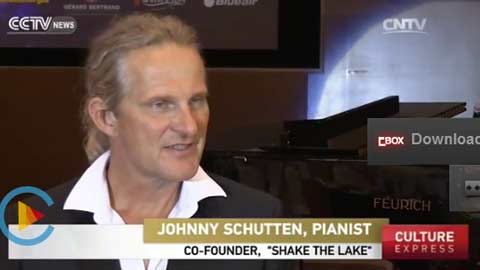by Jon Day
TOKYO, Sept. 21 (Xinhua) -- The Bank of Japan (BOJ) on Wednesday opted to hold its key rates steady but unrolled some fresh measures regarding its short and longer term approaches to its policy framework including the addition of a new interest rate target and a provision that would allow inflation to overshoot its target.
Following a two-day policy board meeting, the central bank announced in a statement that following an extensive assessment of the effects of its monetary policy on the economy, including its decision to plunge its interest rate into negative territory to spur lending from financial institutions, it would introduce a "QQE with Yield Curve Control" as the nucleus of its new policy frame work.
The yield control curve will entail the BOJ controlling both short and long-term interest rates with another key component being an "inflation-overshooting commitment", the bank said in a statement.
This refers to the bank's commitment to expanding the monetary base until the year-on-year rate of increase in the observed consumer price index (CPI) exceeds the price stability target of 2 percent and stays above the target in what the bank described on Wednesday as a "stable manner."
In terms of its short-term policy interest rate, the central bank said that it will apply a negative interest rate of minus 0.1 percent to the policy rate balances in current accounts held by financial institutions at the bank. Its long-term interest rates, the BOJ said, will see the bank purchase Japanese government bonds (JGBs) so that 10-year JGB yields will hover at the current level of about zero.
The BOJ also added that it will maintain bond purchases at the current annual pace of 80 trillion yen.
"The negative interest rate policy introduced by the Bank in January in 2016, in combination with JGB purchases, has pushed down not only short-term but also long-term interest rates substantially," the central bank stated Wednesday.
"This shows that the combination of these policy measures is an effective means for the central bank to exert influence on the entire yield curve," the bank said.
The latest moves by the bank were met with mixed market reactions, with Tokyo stocks rallying on the news and the Japanese yen retreating versus its U.S. counterpart, while the yield on the benchmark 10-year Japanese government bond turning positive on Wednesday afternoon after the bank's announcement for the first time since March.
But some market analysts, however, had hedged that in terms of stagnant growth and the bank's two percent inflation growth remaining quixotic, the BOJ may have opted to cut its interest rates deeper into negative territory, or increase or re-formularize its quantitative and qualitative easing asset purchases.
With the bank on Wednesday describing its outlook for Japan's economy as being on a moderate recovery trend, but remarking that exports and production have been sluggish, private consumption seeing some relatively weak indicators, and industrial production continuing to be more or less flat, economists here said that its plans to buy the requisite amount of bonds in the future may compromise its liquidity.
This, against a backdrop of growing uncertainty following the United Kingdom's decision to leave the European Union and the bank's own view that sluggishness is expected to remain in exports and production "for some time" with the "pace of economic recovery likely to remain slow."
Yet despite market skepticism, BOJ Governor Haruhiko Kuroda at a press briefing following the bank's announcement Wednesday maintained that further easing could be on the cards if necessary.
He said that the central bank would not hesitate to adjust monetary policy with an eye on economic and price developments and would introduce further easing measures when necessary.
Kuroda maintained that the bank could "cut short-term rates, lower the long-term rate target, buy more assets, or, if conditions warrant, accelerate the pace of expansion in monetary base," adding that, "There's room to ease further with the three dimensions of quantity and quality of assets as well as interest rates."
The BOJ chief also remained upbeat on the bank's lofty 2 percent inflation target stating that while the timing had been delayed, the bank's fundamental goal remained steadfast.
"It's true that more than three years have passed since we deployed QQE. But there's absolutely no change to our commitment to achieve 2 percent inflation at the earliest date possible," the BOJ chief said.
And as to the issue of long-term liquidity impacting the bank's ravenous bond buying, Kuroda maintained that the bank's new policy frame work would be a success.
He said that with the yield curve control the bank could achieve declines in real interest rates that are optimal for the economy.
And noting that there are difficulties when it comes to central banks trying to control long-term rates, he noted that other central banks, including the U.S. Federal Reserve, European Central Bank as well as the BOJ had all been purchasing government bonds to influence long-term interest rates following the 2008 global financial crisis.
"I won't say we can fully control long-term rates like the way we control short-term rates," Kuroda conceded, "But central banks have already been taking steps to directly influence long-term rates."
"The BOJ has done so too and clearly has been successful. I'm confident we can succeed with our yield curve control," stated the central bank's chief.










